#Ptolemaic Kingdom
Text
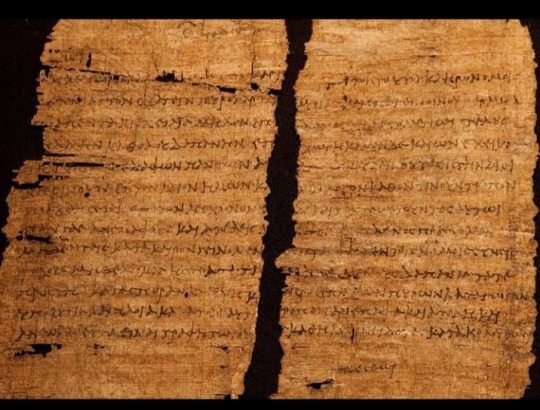
This papyrus signed by Cleopatra grants tax exemption from sales of imported wine to the Roman businessman Publius Canidius, a friend of Mark Antony.
At the bottom, in a rare example of her handwriting, Cleopatra herself added the Greek word "ginesthoi," which means "make it happen."
—
Cleopatra VII Thea Philopator (70/69 BC – 10 August 30 BC) was Queen of the Ptolemaic Kingdom of Egypt from 51 to 30 BC, and its last active ruler.
#Cleopatra#Mark Antony#Publius Canidius#Cleopatra VII Thea Philopator#Ptolemaic Kingdom#Egypt#Ancient Egypt
309 notes
·
View notes
Text

Isis ptolemaica en terracota policromada. Siglos IV-I a. C.
#archaeology#art#isis#goddess#ancient egypt#ptolemaic kingdom#ptolemaic isis#artwork#sculpture#ptolemaic egypt#ptolemaic dynasty#arte#arqueología#diosa#mitología egipcia#antiguo egipto#egyptian mythology#escultura#mythology
5 notes
·
View notes
Text

Minhopete: That's right! And no one knows he's here yet, thanks to me!
Minhopete: I skillfully tricked the rat into sneaking off!
Tutanblot: Ah! Brilliant idea!

Tutanblot: Who suggested it to you?
Il Principe delle Sabbie (2023)
#lmao!#poor pete!#so underestimated! xD#pete pegleg#phantom blot#alex bertani#francesco vacca#giuseppe facciotto#period piece#ptolemaic kingdom#topolino magazine#disney gang#disney mice#italian disney comics#from this week topolino
21 notes
·
View notes
Photo
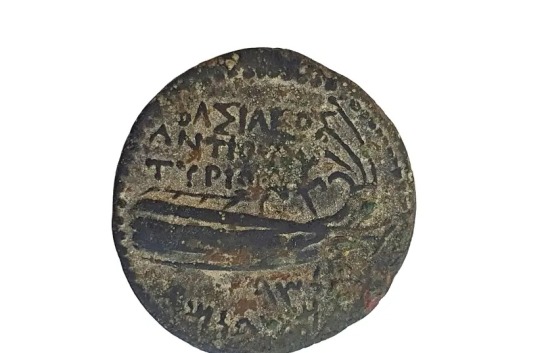
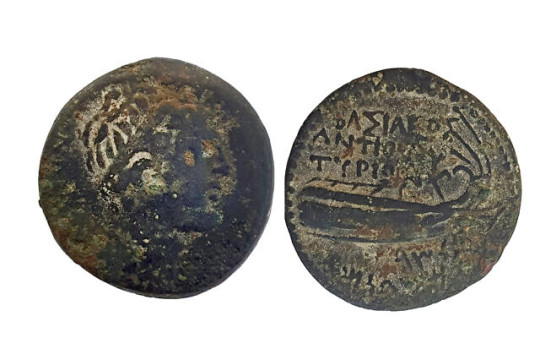
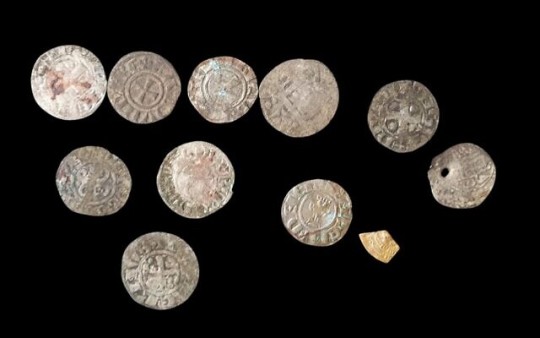

A Rare Looted Coin of Hanukkah Villain Found in Israel
Currency bearing visage of King Antiochus IV discovered in home of Kiryat Shmona man caught ‘in the act’ of illegally using metal detector at northern archaeological site.
A house search of a suspected artifact thief in the northern town of Kiryat Shmona led to the discovery of illegally obtained artifacts on Wednesday, most notably a coin depicting the Seleucid King Antiochus IV, the villain of the Hanukkah story, the Israel Antiquities Authority said.
According to Danny Synon, an IAA coin specialist, the bronze coin found at the suspect’s home was minted in Tyre, today part of Lebanon, and was “common currency” during the era.
It was the “small change” of the day and hundreds of such coins have been found in digs throughout Israel, Synon said.
While it is impossible to know how much the coin was worth during the reign of Antiochus IV, it would have been used to purchase everyday items from the local market, he said.
“I can’t say whether it was worth a loaf of bread or a chicken, but something along those lines,” said Synon.
The suspect, 33, was caught “in the act” by Border Police, who found him illegally using a metal detector at a registered archaeological site in Ramot Menashe in northern Israel.
“He was detained for questioning, and in his bag were found ancient coins, various digging implements, and a metal detector,” the IAA said in a statement.
The IAA’s Department for the Prevention of Archeological Theft then conducted a search of the man’s house, finding the coin in addition to “arrowheads, rings, cosmetic spoon, buckles, lead objects, buttons and more.”
The suspect was released following questioning, and his metal detector was confiscated. The IAA is weighing whether to press charges, the statement read.
If convicted, those guilty of collecting antiquities at registered sites can be jailed for three years.
“The suspect claimed that he was interested in geology, and was looking for quartz crystals and metals, and ‘by the way’ he collected coins and other ancient finds,” said Nir Distelfeld, the IAA’s northern area inspector of the Department for the Prevention of Archaeological Theft.
Distelfeld noted that the discovery of the Antiochus IV-era coin was made shortly before Hanukkah, the eight-night Jewish festival set to begin on December 18.
Antiochus IV was a Seleucid monarch remembered in Jewish history for his promotion of Hellenization and suppression of religious observances. While he was battling the rival Ptolemaic kingdom in Egypt for control of the Levant, Jewish zealots rose in revolt against Antiochus and the Hellenized high priest installed in Jerusalem’s Second Temple.
Antiochus returned from Egypt and attempted to quell the uprising. After his death on a subsequent campaign in Persia, Hasmonean rebels led by Judah Maccabee and his clansmen succeeded in wresting control of Judea from the Seleucid Greeks, restoring the temple and forming a Jewish kingdom that ruled for a century. The Hanukkah holiday celebrates the Maccabees’ victory over the Greeks and Hellenized Jews.
According to Synon, what is unique about the currency series that the bronze Antiochus IV coin is part of is that they were minted during what he calls an “economic experiment” conducted by the monarch in which he allowed four municipalities to mint their own local coinage.
One side of the “municipality coin” usually featured a local god, said Synon, and the other side was engraved with an image connected to the local area. In the case of the recently recovered coin, one side features the king, and the other shows a ship and the name of the port city of Tyre.
“Stealing remains from ancient sites negates the possibility of researching the finds and the sites in their true archaeological historical context, thus withholding valuable knowledge from researchers and the entire community,” IAA director Eli Escusido said in a statement.
#A Rare Looted Coin of Hanukkah Villain Found in Israel#King Antiochus IV#Hanukkah story#Ptolemaic kingdom#collectable coins#ancient coins#ancient artifacts#metal detector#metal detecting finds#archeology#archeolgst#history#history news#ancient history#ancient culture#ancient civilizations
16 notes
·
View notes
Text
Most books will tell you that there are three languages on the Rosetta Stone, but if you look on the broken side, you can see that in fact there are four. Because there, stencilled on in English, you can read: "CAPTURED BY THE BRITISH ARMY IN 1801; PRESENTED BY KING GEORGE III". Nothing could make it clearer that if the text on the front of the stone is about the first European empire in Africa, Alexander the Great's, the finding of the stone stands at the beginning of another European adventure - the bitter rivalry between Britain and France for dominance in the Middle East and in Africa, which had continued from Napoleon until the Second World War. We asked the Egyptian writer Ahdaf Soueif for her view of this history:
"This stone so makes me think of how often Egypt has been the theatre of other peoples' battles. It's one of the earliest objects through which you can trace Western colonial interest in Egypt, because of course it was found by the French in the context of Napoleon's invasion of the country, and then appropriated by the British when they defeated him, and the French and the British argued over it. No-one seems to have considered that it belonged to neither of them. But Egypt's foreign rulers, from the Romans to the Turks to the British, have always made free with Egypt's heritage. Egypt, for two thousand years, had foreign rulers and in '52 much was made of the fact that Nasser was the first Egyptian ruler since the pharaohs, and I guess we've had two more since, although with varying results."
— A History of the World in 100 Objects: Rosetta Stone
#history#military history#languages#translation#colonialism#museums#french revolutionary wars#war of the second coalition#french campaign in egypt and syria#capitulation of alexandria#treaty of alexandria#ww2#ptolemaic kingdom#egypt#ancient egypt#france#britain#england#british museum#ptolemy v epiphanes#napoleon bonaparte#gamal abdel nasser#ahdaf soueif#rosetta stone
0 notes
Text

The Pharos of Alexandria by Roy Krenkel
#lighthouse of alexandria#pharos#alexandria#lighthouse#art#roy krenkel#ptolemaic#kingdom#ancient greek#ancient egypt#ancient world#egypt#monument#antiquity#history#architecture#seven wonders#lighthouses#structure#mediterranean#ship
320 notes
·
View notes
Text
Archaeologists have made a breathtaking discovery in Egypt, uncovering tombs dating back to the Ptolemaic and Roman eras. This extraordinary find offers a glimpse into ancient burial practices, revealing a trove of artifacts including pristine mummies, ornate coffins, stunning gold masks, and captivating terracotta statues of Isis-Aphrodite.
Led by Dr. Esther Ponce Milado from the University of Barcelona, the team's discoveries are redefining our understanding of the region's rich cultural history. Imagine uncovering a new burial style - a pit carved into natural rock - never before seen in Al-Bhanasa!
#Minya#Egypt#tomb#mummies#Ptolemies#Ptolemaic Dynasty#Hellenistic Kingdom#Roman Gods & Religion#ancient#history#ancient origins
35 notes
·
View notes
Text

𝔗𝔥𝔢 𝔏𝔦𝔳𝔦𝔫𝔤 𝔐𝔲𝔪𝔪𝔶 𝔟𝔶 𝔉𝔯𝔞𝔫𝔨 𝔅𝔯𝔲𝔫𝔫𝔢𝔯
#Frank Brunner#The Living Mummy#art#artwork#mummy#Queen of the Ptolemaic Kingdom of Egypt#painting#illustration
39 notes
·
View notes
Text



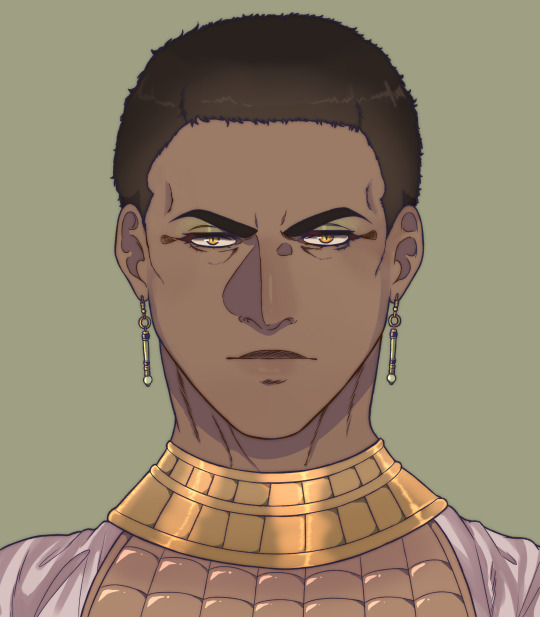

Introducing the main characters from the webcomic I'm developing on Ancient Egypt: Lucius, Djet, Iaret (Chloe), Khawy and Sempronia!
#webcomic#ancient history#pharaonic egypt#roman egypt#republican rome#imperial rome#ptolemaic egypt#new kingdom#late period#ancient egypt#ancient rome#vampires#my art#tfotds#the followers of the divine snake#smswart#thefollowersart#lucius#djet#iaret/chloe#khawy#sempronia
4 notes
·
View notes
Note

I saw this today and knew in my heart you would have a rant locked and loaded about it so I am giving you the opportunity to do so if you wish <3
You'd do this to me on April 1st?
I've kinda been here before in a way. They're not 'melted'. They're not made from granite, but limestone that has undergone wear and tear. You can get lintels or stele from granite, sure. Granite was the prerogative of the king so people were quite happy to get permission and show that off with their granite pieces. A whole temple staircase? No.
I've been to Dendera. I've climbed this staircase to get to the roof. What these images are missing is a) the window that's just at the top of it, and b) the rest of the staircase with no damage. Or:


The 'melting' is confined to this very specific section under that window and goes about as far as the sun reaches during the day when it shines through. It's in the middle of the staircase, right where people would walk, and since we're in Egypt they'd bring in sand to sit on top of the limestone. This would get heated by the sun and probably in some way fused to the stairs (I'm not a geologist but y'know). Water from rainfall could also make it in through that window to cause wear and tear too because limestone is erm...soft. This can also happen to granite. You look at any granite stairs in old European towns where they're used and even in 500 years:

I'm sure Wells Cathedral also had a lovely nuclear accident too judging by their stairs:

This is all really just the result of like 2500 years of going up and down stairs.
But anyway here are some of my own photos of Dendera rooftop, which I had to use those 'melted' stairs to reach:



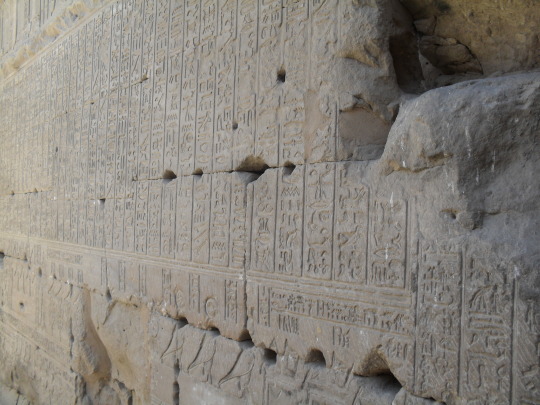

Hmm yes seems very like there was a nuclear accident/war on this site. Idk about the rest of you, but I don't think limestone would withstand a blast like that.
'it is said that some of Dendera was built over an existing site'
yeah it's a Ptolemaic temple built around an existing Middle Kingdom temple, with New Kingdom bits and even Roman period bits. Wow...such continued use of a religious site. Such conspiracy.
681 notes
·
View notes
Photo
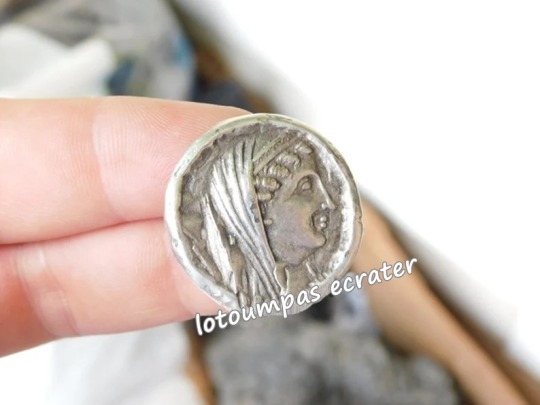
Arsinoe Dekadrachm Ancient Coin Ptolemaic Kingdom Egypt Reproduction Replica Coin - Lotoumpas.
https://lotoumpas.ecrater.com/
#egypt#egyptian#greek#greece#ancient#coin#arsinoe#queen arsinoe#decadrachm#dekadrachm#ptolemy#kingdom#ptolemaic#collector#collectible#collectibles
0 notes
Text

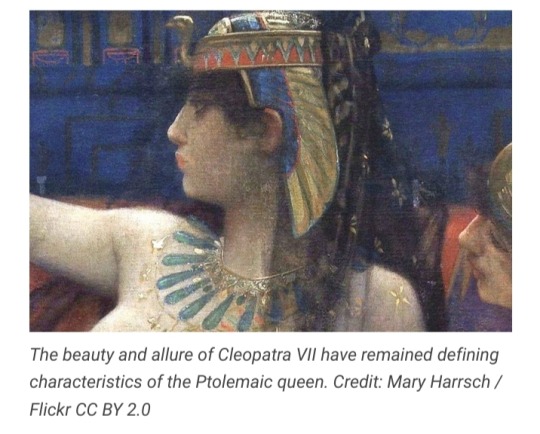
A significant part of Cleopatra VII Philopator’s enduring reputation is as one of history’s most famous femme fatales, renowned for her beauty and wit which attracted not one, but two of the Roman Republic’s most powerful men.
Whether or not this popular characterization of Cleopatra is historically accurate, her reputation has led many to wonder whether she had any particular beauty secrets that she used to ensure Julius Caesar and Mark Anthony.
The historical record does provide some clues as to how the Ptolemaic dynasty’s most famous ruler presented herself, from hairstyles to clothing, and even makeup.
Although we cannot be entirely certain how she presented herself, there are enough historical details to piece together a reasonable picture of how Cleopatra might have presented herself.
Was Cleopatra really a beauty?
As the old adage goes, “Beauty is in the eye of the beholder.”
As far as the ancient sources are concerned, the question of Cleopatra’s beauty raised mixed responses, with some ascribing an irresistible physical appearance to her and others attributing her allure more to her intellect and charm.
For example, Cassius Dio (164 to c. 235 AD), an ancient Greek historian, described Cleopatra as “a woman of surpassing beauty.”
During the first meeting between Julius Caesar and Cleopatra, Cassius Dio wrote:
"Caesar, upon seeing her and hearing her speak a few words, was so completely captivated that the Roman general acquiesced immediately to Cleopatra’s requests."

Plutarch (c.46 to c.119 AD) also briefly commented on the Ptolemaic queen’s appearance in his Life of Mark Anthony.
Contrary to Cassius Dio, Plutarch did not reckon Cleopatra’s beauty to be particularly noteworthy but instead praised her intelligence and character.
“Her beauty, so we are told, was not itself outstanding; it did not immediately strike those who saw her; yet being with her had an inescapable hold; when talking with her, she was persuasive, and the character which surrounded her whole manner in company had a force to it,” wrote the Greek historian and philosopher.
Hair and makeup
In the few surviving marble busts of Cleopatra, she is depicted wearing her hair tied at the back in a bun.
Historians like Paul Edmund Stanwick refer to this as a “melon hairstyle.”
Coinage depicting the queen shows her wearing the same hairstyle.
Depictions of Cleopatra with this hairstyle also show her wearing a diadem, a symbol of royal power adopted by many Hellenistic rulers who succeeded Alexander the Great as the masters of the divided fragments of his empire.

Professor Diana Kleiner of Yale University has identified two more hairstyles worn by Cleopatra.
One of these hairstyles emulated those worn by Macedonian queens, which is unsurprising given Cleopatra’s lineage.
To achieve this style, the hair was carefully divided into individual curls, which were typically swept away from the face and elegantly gathered into a bun positioned at the back.
According to Professor Keline, it may have been worn during travel.
The other hairstyle was “the usual Egyptian wigged headdress that had its origins in Pharaonic times.”
In this case, the main point of attention would have been the headdress rather than the hair itself, with a rearing cobra made of precious metal proudly displayed.
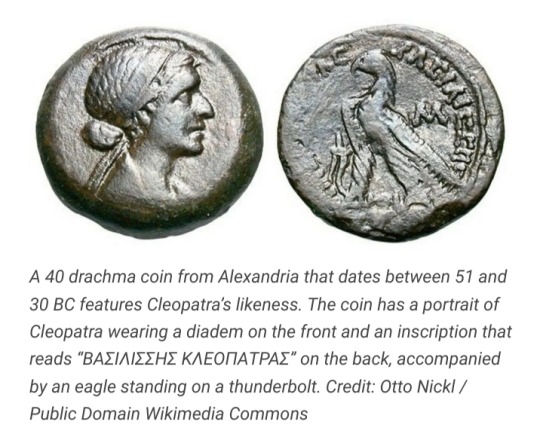
Professor Kleiner explains that “Cleopatra appears to have worn different coiffures in different circumstances, playing to her audience, so to speak, in life and in art.”
It would have been important for her to present herself in the Hellenistic fashion to the Greek elites who held the most senior positions in Ptolemaic Egypt, but also in traditional Egyptian fashions for her ruler to appear legitimate to a native Egyptian audience.
Regarding the Ptolemaic queen’s makeup choices, she would darken her eyebrows and enhance her eyeliner using black kohl, creating an elongated look.
The application of deep blue eyeshadow extended gracefully up to her brows, further accentuating her eyes.
Additionally, Cleopatra embraced the fashionable trend of adorning her hands with intricate henna patterns, a popular practice during that era in Alexandria.
Clothing
Cleopatra wore a variety of Greek, Egyptian, and Roman outfits intended to accentuate her beauty.
The selection of these styles would have been dependent on the contexts in which the queen appeared, as it was important for her to present herself accordingly to her friends, foes and subjects.
One of the styles she wore combined Greek and Egyptian aesthetic sensibilities and is seen depicted on sculptures of other Ptolemaic queens.
This style consisted of a sheer dress, likely of a semi-transparent material, which left the bare breasts exposed in a manner popular amongst native Egyptian women.
The depictions of other Ptolemaic queens wearing this style are consistent with the writings of the Roman poet Lucan, who claimed that she wore a transparent dress that exposed her breasts, likely made of Chinese silk.
Lucan also described the jewelry she wore, writing that “her baleful beauty inordinately painted, covered with Red Sea pearls, a fortune in her hair and around her neck, weighed down with jewelry.”
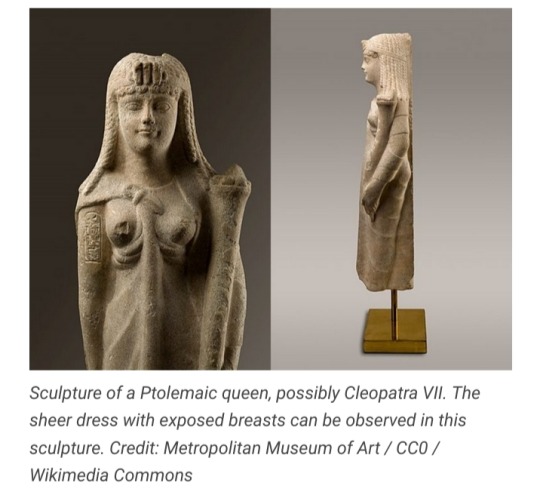
NOTE:
Cleopatra VII Thea Philopator (70/69 BC – 10 August 30 BC) was Queen of the Ptolemaic Kingdom of Egypt from 51 to 30 BC and its last active ruler.
A member of the Ptolemaic dynasty, she was a descendant of its founder, Ptolemy I Soter, a Macedonian Greek general and companion of Alexander the Great.
#Cleopatra VII Thea Philopator#Cleopatra#Queen of the Ptolemaic Kingdom of Egypt#Ptolemaic Dynasty#Ancient Egypt#Ptolemy I Soter#Ancient Macedonians#Julius Caesar#Mark Anthony#Cassius Dio#Plutarch#melon hairstyle#Egyptian fashion#Lucan#Ptolemaic Queen#Hellenistic fashion#Alexandria#Beauty Secrets of Cleopatra
44 notes
·
View notes
Note
I know you don't usually do these kinds of posts, but you're probably one of the most implicated in black history month people that I follow so I wanted to ask you, as I already value your opinions in Acotar, what do you think of the documentary where actual historians claim Cleopatra was a black woman? Lately, this has been a pretty active topic on my fyp on TikTok, and I wanted to know a black woman's perspective on this.
Thank you in advance, and if you usually don't answer these questions or don't want to answer this one, I'll totally understand, and there's no problem at all.
I didn’t know there was a new documentary out, but when I saw the name Cleopatra I automatically sighed because I knew what was coming. This is a subject a know a little 🤏🏾 about, actually, because I researched it a bit myself in my last year of high school (and stopped because of the uh. NASTINESS associated with this particular subject) and though it’s been a few years I remembered some main, basic things, and I wanted to check a few things first.
At best, in the most CHARITABLE interpretation as far as I in my limited knowledge can tell, it would be correct to say that’s it’s POSSIBLE that she MAY have been mixed Black because, though she was part of the GREEK Ptolemaic dynasty that ruled Egypt (Ptolemy being one of Alexander the Great’s generals who got the Egyptian portion of his empire after Alexander died), that’s on her fathers side; her mother’s exact ethnicity isn’t known. Not that this won’t stop the hoteps from running off and claiming her and all of ancient Egypt as Black though So some have ***speculated*** that her mother—and thus Cleopatra—may have potentially been part Egyptian (and that goes into the issue of deciding that the “Egyptian” in this instance had to have been Black rather than MENA but that’s again a whole other can of worms). BUT it’s more likely that her mother was Greek due to the uh, PRACTICE™️ of inbreeding and it not being common for the dynasty to marry Egyptians. So it’s more probable that she was fully Greek/Macedonian and not part Egyptian, much less part Black. (Also some historians speculate she may have had Persian blood? I guess? Again it’s a can of worms, not something i’m digging deep into because of the nastiness that you often stumble across) Unless there’s a new study confirming her mother’s identity or something that I missed, it’s simply incorrect to claim that Cleopatra was undeniably Black, because though it is ***possible*** she most likely ***wasn’t.***
But this topic really upsets me, because there are LEGITIMATE Black kingdoms and empires who were mighty and well developed and powerful like the Aksumite empire and kingdoms of Kongo and Loango and the Great Zimbabwe empire and the empires of Ghana and Mali and Songhay and the Ashanti kingdom and the WHOLE SWAHILI COAST THAT WAS INVOLVED IN THE INDIAN OCEAN TRADE ROUTE and they had their own great rulers, their own kings and queens and emperors and empresses, their palaces and castles, their own cities and towns, their own complex civilizations and dynastic royal families that deserve the attention Cleopatra and ancient Egypt get. They were erased—and Egypt was not—by white people to prop themselves up as the only race capable of forming civilizations and advanced societies as a means of justifying colonization and imperialism to “civilize” the rest of the world and as a result many of those other empires have been erased from our education system here in the states and many people cling to ancient Egypt as proof that we’re not inferior and aren’t savages like white people claim due to believing that since Egypt’s in Africa it had to have been mostly Black when Egypt, and the Ptolemaic dynasty and Cleopatra in PARTICULAR, are literally the worst example that could’ve been chosen and were the only African kingdom spared erasure FOR A REASON.
Anyway, I don’t like it, it’s disingenuous and does US wrong because we need to give that energy to other African kingdoms that need and could use the fame Egypt + Cleopatra get, and we deserve a better education system to teach us this stuff. I hope this answers your question? And I don’t mind any kinds of asks 🥰
#I get the desire to claim Egypt because I remember in high school a racist white guy asked why Africans didn’t build their own civilizations#And that’s what sent me researching in the first place so I truly get the frustration but black women we can do BETTER#ask#anon#cleopatra#egypt#africa#racism#Don’t come at me in my inbox yall#antiblackness
1K notes
·
View notes
Text

Statue of Queen Cleopatra
Black basalt statue of Cleopatra VII Philopator, last active ruler of the Ptolemaic Kingdom of Egypt, 1st century BC.
Cleopatra VII Philopator is one of the most mesmerizing women in all of history. Born of a Ptolemy, she became queen at the early age of 17. She was highly educated in the full laws and customs of Egypt, Greece, and Rome, she engrossed herself in science, philosophy, women’s issues, and most impressive the native language of Egypt. She chose to link herself with Egypt by her dress, worship, and representation.
Now in the State Hermitage Museum, Saint Petersburg. ДВ-3936
Read more
303 notes
·
View notes
Text

The Famine Stela is an ancient inscription in Egyptian hieroglyphs found on Sehel Island near Aswan, Egypt. It recounts a seven-year drought and famine during the reign of Pharaoh Djoser of the Third Dynasty (circa 2686 BC - 2613 BC). King Ptolemy V is believed to have inscribed it during the Ptolemaic Kingdom around 205-180 BC. The top part of the stela depicts Djoser offering to Egyptian deities while expressing concern about the drought's impact on his people. Initially, it was connected to the biblical story of a seven-year famine in Genesis 41, but further research has revealed similar stories in Mesopotamian legends and the Gilgamesh Epic, suggesting a common theme in ancient Near Eastern cultures. Another Egyptian tale of prolonged drought is also found in the "Book of the Temple."
68 notes
·
View notes
Note
What the feckin heck is Ptolemaic Egypt?
So Alexander the Great conquered the world, or I should say most of the world that the Greeks knew of at that time. His empire didn't last long, however, collapsing roughly two seconds after his death in 323 BC. His generals carved up the empire, becoming kings of the various parts of the empire. They were called the Diodochs, and they would all start trying to fight each other to take the entire empire for themselves, but that was all just wishful thinking and eventually they would become independent kingdoms.

One of his generals named Ptolemy Soter took over Egypt, and the house of Ptolemy ruled Egypt for roughly the next 300 incestuous years. That is why that period is called "Ptolemaic Egypt". The house of Ptolemy would fall when its final ruler Cleopatra VII backed the wrong side in a Roman civil war resulting in her death and the Roman conquest of Egypt.
111 notes
·
View notes